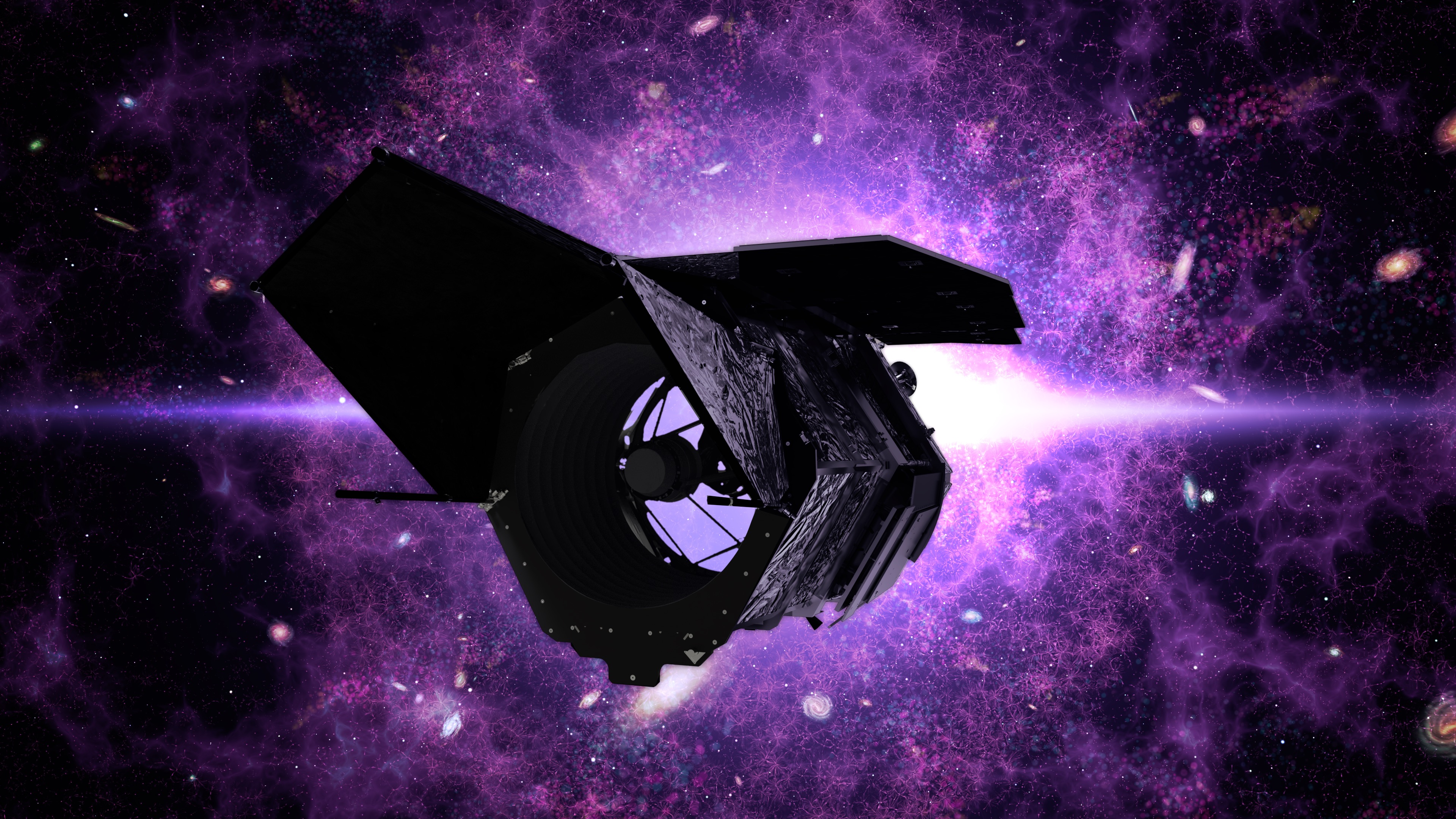Dizzy up the telescope: NASA channels 'Space Invaders' in new browser game
Attacking aliens just took on a whole new meaning.
Time to get your laser blasters ready again to hunt down aliens — or at least alien galaxies.
A new NASA browser game aims to recreate the 1978 arcade and Atari classic, "Space Invaders," to showcase the forthcoming science of its Nancy Grace Roman Telescope.
Instead of shooting down extraterrestrials as Gen-X gamers did, your goal is to move Roman's lens atop alien objects, 8-bit style. Floating around your telescope will be supernovas, exoplanets, dark matter, black holes and even the NASA James Webb Space Telescope, just launched Dec. 25.
Related: The best Hubble Space Telescope images of all time!

Glide quickly enough and you might just beat Jamie Adkins, digital lead at NASA's Goddard Space Flight Center, who scored 495 Thursday (June 2), according to an agency tweet. (Your trusty Space.com reporter and part-time gamer got a paltry 348 during her first try.)
Roman is expected to launch in the mid-2020s, using a wide-field Hubble-class lens to observe exoplanets, dark energy, galaxy distribution and other cosmic phenomena to add on to research about the universe's evolution and formation. Webb and Roman will occupy similar deep-space orbits a million miles from Earth, around a point called Lagrange 2.

During the official launch on Twitch Thursday, two NASA representatives demonstrated how the game works for viewers.
Get the Space.com Newsletter
Breaking space news, the latest updates on rocket launches, skywatching events and more!
"I'm going to get my game face on," Rebekah Hounsell, an assistant research scientist at NASA's Goddard Space Flight Center in Maryland, said while putting on a pair of headphones to get the full gaming experience.
During the game, Hounsell called out the objects on the screen while trying to whirl Roman as fast as possible to catch things flying by. A rogue exoplanet streaked across the screen, just barely out of Hounsell's reach.
"They're so fast!" exclaimed Sophia Roberts, an astrophysics video producer at Goddard. Moments later, the final score for their first session: 240. (Do watch the entire livestream to see if they managed to best that effort.)

Space Invaders was designed by Tomohiro Nishikado, an employee of Japan's Taito; the company continues to produce games and other items more than 40 years later.
Just four years after its 1978 release, Taito sold 400,000 arcade cabinets and grossed $3.8 billion in revenue, which was more than $13 billion in 2018 dollars. That made the game the highest-ever grossing of all time, according to Den of Geek.
Numerous sci-fi elements played into the game, but a little story in a galaxy far, far away was among them. "Star Wars," whose franchise debuted in 1977, inspired the outer space theme used in the final version, Nishikado told the Guardian.
"Initially I started with tanks, then tried warships and warplanes — but the movement and animation didn't match the game. After much trial and error, by far the best match were soldiers, but shooting people was frowned upon," he said in 2018.
"While I was stuck for an alternative, I chanced upon 'Star Wars' and realized I could use aliens, because no one would complain about shooting them," he added.
"Space Invaders" has influenced gaming luminaries, the Guardian said, such as Shigeru Miyamoto (creator of the "Super Mario" and "Zelda" franchises) and Hideo Kojima ("Metal Gear," "Death Stranding"), along with John Romero and John Carmack (who both worked on games including "Doom," "Quake" and "Wolfenstein 3D.")
Follow Elizabeth Howell on Twitter @howellspace. Follow us on Twitter @Spacedotcom or Facebook.
Join our Space Forums to keep talking space on the latest missions, night sky and more! And if you have a news tip, correction or comment, let us know at: community@space.com.

Elizabeth Howell (she/her), Ph.D., was a staff writer in the spaceflight channel between 2022 and 2024 specializing in Canadian space news. She was contributing writer for Space.com for 10 years from 2012 to 2024. Elizabeth's reporting includes multiple exclusives with the White House, leading world coverage about a lost-and-found space tomato on the International Space Station, witnessing five human spaceflight launches on two continents, flying parabolic, working inside a spacesuit, and participating in a simulated Mars mission. Her latest book, "Why Am I Taller?" (ECW Press, 2022) is co-written with astronaut Dave Williams.









